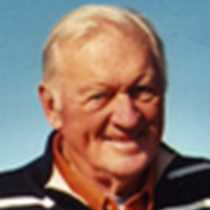Palouse River
About 70 miles downriver from this location, and on this day 200 years ago, William Clark wrote in his journal: “one of our party J. Collins presented us with some very good beer made with the Pa-Shi-co-quar-mash bread (camas roots) . . . which bread is the remains of what was laid in as Stores of Provisions, at the first flat heads or Cho-pun-ish Nation at the head of the Kosskoske river (Idaho).”
The mouth of the Palouse River, the lower Snake’s largest tributary, is backwater from a nearby dam. While at anchor, surrounded by basalt formations including the “heart of the monster,” beer was also served to Lindblad guests during today’s deck barbecue. The hearty midday meal was earned by a morning of kayaking, Zodiac explorations, and motorcoach trips to the spectacular Palouse Falls. All of this was surrounded by the flaming colors of deciduous trees, rock sculpture, brown monuments of the Scablands (shaped by the Bretz Floods over 17,000 years ago), and warm fall sunshine.
The Palus Indians, cousins of the Nez Perce, insist that their spelling is correct and that it is derived from a large village that once dominated the Palouse River mouth – where the Sea Bird lay at anchor. Only three elderly full-blood Palus Indians are known to be alive, living on Washington State’s Yakama Indian Reservation.
Despite several kayakers with dripping paddles, no one at the falls got wet. A Palouse Falls monument memorializes Professor Roald Fryxell of Washington State University (Pullman, WA) who “discovered” and excavated the Marmes Rockshelter in the 1960s. Evidence of human activity found at that historic site dated 10,000-12,000 years earlier. The site, again due to backwater of a nearby dam, has been lost.
Following the Sea Bird’s first daylight transit of a dam (Lower Monumental, 1969, 100 foot lift lock), with narration from historians and naturalists, the historian gave a presentation about Lewis & Clark. The talk’s title was “Why Lewis & Clark,” an introduction to 1800s conditions in the Oregon Country, personalities, and historic precedents that led to the Corps adventure. The historian introduced pertinent characters and forces, saving the expeditions’ regional and national influences for later in the week.
A film about Lewis & Clark was shown after dinner.
About 70 miles downriver from this location, and on this day 200 years ago, William Clark wrote in his journal: “one of our party J. Collins presented us with some very good beer made with the Pa-Shi-co-quar-mash bread (camas roots) . . . which bread is the remains of what was laid in as Stores of Provisions, at the first flat heads or Cho-pun-ish Nation at the head of the Kosskoske river (Idaho).”
The mouth of the Palouse River, the lower Snake’s largest tributary, is backwater from a nearby dam. While at anchor, surrounded by basalt formations including the “heart of the monster,” beer was also served to Lindblad guests during today’s deck barbecue. The hearty midday meal was earned by a morning of kayaking, Zodiac explorations, and motorcoach trips to the spectacular Palouse Falls. All of this was surrounded by the flaming colors of deciduous trees, rock sculpture, brown monuments of the Scablands (shaped by the Bretz Floods over 17,000 years ago), and warm fall sunshine.
The Palus Indians, cousins of the Nez Perce, insist that their spelling is correct and that it is derived from a large village that once dominated the Palouse River mouth – where the Sea Bird lay at anchor. Only three elderly full-blood Palus Indians are known to be alive, living on Washington State’s Yakama Indian Reservation.
Despite several kayakers with dripping paddles, no one at the falls got wet. A Palouse Falls monument memorializes Professor Roald Fryxell of Washington State University (Pullman, WA) who “discovered” and excavated the Marmes Rockshelter in the 1960s. Evidence of human activity found at that historic site dated 10,000-12,000 years earlier. The site, again due to backwater of a nearby dam, has been lost.
Following the Sea Bird’s first daylight transit of a dam (Lower Monumental, 1969, 100 foot lift lock), with narration from historians and naturalists, the historian gave a presentation about Lewis & Clark. The talk’s title was “Why Lewis & Clark,” an introduction to 1800s conditions in the Oregon Country, personalities, and historic precedents that led to the Corps adventure. The historian introduced pertinent characters and forces, saving the expeditions’ regional and national influences for later in the week.
A film about Lewis & Clark was shown after dinner.




